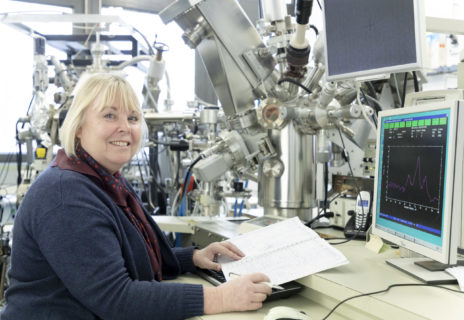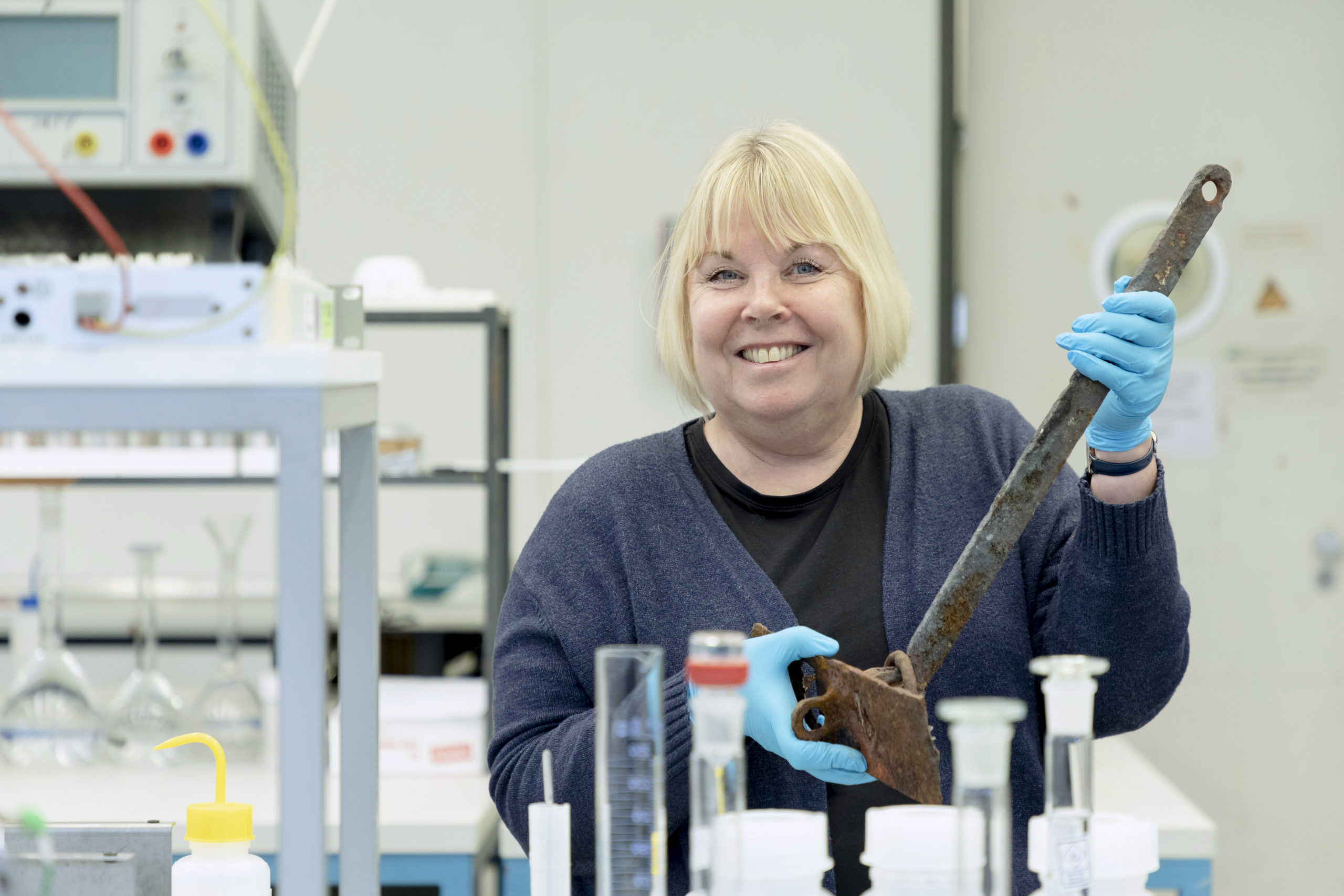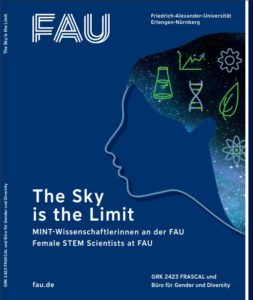It all started with icebreakers on the Baltic Sea

In our series of 22 reports, we present a panorama of female researchers from various qualification levels and academic positions, ranging from students to W3 professors. With their individual career paths, the female researchers in STEM subjects act as role models to encourage young female researchers to pursue an academic career, giving interesting insights into their careers to date. The MINT experts also share aspects of their private lives.
Professor Sannakaisa Virtanen: It all started with icebreakers on the Baltic Sea
Prof. Dr. Sannakaisa Virtanen is an expert in materials science and engineering, specialising in corrosion and surface technology. Originally from Finland but now settled in Erlangen, she was the FAU women’s representative for 6 years until 2016, and has since actively supported and championed many young female researchers. She comes from a culture where it has been accepted for many years now that it is nothing unusual for women to enter a STEM profession.
As a child, Sannakaisa Virtanen loved helping her father with DIY, and he took his daughter’s interest in technical subjects seriously. She was born in 1960 and grew up in a town near Helsinki. She knew from a very young age that science subjects like chemistry and physics were her passion. ‘As a child, I was curious to discover what batteries are made of and how they make a torch shine!’ However, she was also interested in languages, and that was why she came to Germany, or Franconia to be specific, for the first time in 1977, on a school exchange. She visited Nuremberg, but never dreamt that one day she would find herself working at FAU.
‘Corrosion is so much more than just rusting!’
After leaving school, she studied materials science and engineering at Helsinki University of Technology. Even then, her main focus was on corrosion. ‘In my final thesis, I investigated the rusting of icebreakers used in the Baltic Sea in Finland during winter.’ She immediately adds, ‘but corrosion is much more than just rusting! Corrosion occurs wherever there are metallic materials. The consequences can be dire, for example when it comes to corrosion in biomedical implants.’ Her research has already covered such diverse objects as cars, turbine blades and planes as well as hip replacement implants and stents. ‘My work is aimed at cutting costs caused, for example, by premature failure of components, and we also hope to avoid risks for health and safety.’ The objective of her research is to make materials more stable and extend their lifespan. ‘That is definitely of practical relevance and has a direct impact on our everyday lives.’

From Finland into the male-dominated world of ETH Zürich
Immediately after graduating in engineering in the mid 1980’s, Sannakaisa Virtanen felt the urge to go abroad to another European country, preferably a German or English speaking country, as these were the languages she had learnt at school. Her professor in Helsinki arranged a position for her in Switzerland, with an acquaintance who ran a company there. ‘I had no idea that Swiss German is so different!’ she laughed. That wasn’t the only surprise in store for her in the Alpine country. She had only been working in the industrial company for a little while when she was given the opportunity to complete a doctoral degree at the Swiss Federal Institute of Technology in Zurich (ETH). She was one of the first female doctoral candidates in her subject, and at the beginning felt that several people in the Institute were rather sceptical towards her. She also often read between the lines that a number of her male colleagues were happy with the traditional status quo of gender roles. ‘I am not a women’s rights activist, but I was rather taken aback by the traditional view of the role of women that I encountered in Switzerland.’ Although she felt rather unsure of herself at first as the only young, foreign female researcher in a group of considerably older, more experienced, male experts in the field, she soon learnt to join into conferences or project discussions with confidence. ‘I said to myself that I am here because I have something to contribute, namely reporting on my research findings, and I want to make the most of that opportunity!’
After completing her doctoral degree on highly corrosion-resistant metallic glasses in just three and a half years, she initially remained at ETH as a senior research fellow and later as an assistant professor. ‘All of a sudden, some other opportunities then arose for research stays abroad in the US and Canada,’ Virtanen explains. After that, however, she realised that she preferred academic life and the lifestyle in general in Europe, and she wanted to return there. However, there were not many positions available in her particular specialisation. She was willing to travel, but she finally wanted to have a permanent position. ‘The insecurity of whether another job would turn up and where it would be after all the temporary contracts I had had to date was a burden.’
‘Luck did always come into it for me as well’
It was at this point that a professorship in her exact area of expertise became vacant at FAU. She applied – and got the job. ‘My very first permanent job was in Erlangen!’ She was appointed as a professor in 2003. ‘FAU is one of the leading institutions in Germany for materials science and engineering and it also has a top international reputation,’ Virtanen explains. She believes that luck has always had a certain role to play. A lot of things worked out for her without her actually planning it that way. This is where she sees a difference to the current situation: ‘Nowadays, young female researchers are very focused and make much more conscious decisions, but on the other hand, much more information is available than in my time. I often tell young women: There is not only one correct career path. There is such a lot that you cannot plan. You need to stay flexible.’
From the point of view of her subject, Erlangen is exactly the right place for Virtanen to be, and in addition it has ‘almost everything you could ask for, especially quality of life.’ In her opinion, FAU offers excellent infrastructure for research. ‘The proximity of the engineering sciences to natural sciences is extremely important for my area of research. At FAU, there are a number of different opportunities for interdisciplinary collaboration.’
‘More tolerance for unusual career paths’
When Sannakaisa Virtanen became women’s representative in 2011, there was already a focus on appointing more female professors and making it easier for women at the university to balance family and work commitments, for example by providing childcare. That was the time that the ARIADNE programme was being established and rolled out, a career and mentoring programme for young female researchers at FAU. The former women’s representative believes that one way to encourage more women to become professors in STEM subjects would be to word the calls for applications in a rather more open way in order to receive applications from the still very restricted pool of potential female candidates. The more specific the topic is, the less probable it is that there are female researchers specialising in it. Virtanen continues, ‘In appointment committees we should demonstrate a certain degree of tolerance for unusual career paths that may have been caused by a candidate’s family situation.’ Although asking about a candidate’s private life at all, let alone in detail, is a highly delicate situation. Another option would be to approach women directly. ‘Headhunting can help identify potential female candidates for the position. However, it is important to only address those who would have a genuine chance of being appointed.’
This article is part of the brochure “The Sky is the Limit”

Brochure “The Sky is the Limit”
Diverse, inspiring and innovative, the brochure “The Sky is the Limit” introduces female researchers in STEM subjects from the Faculty of Engineering and the Faculty of Sciences in a series of varied interviews.
Other interviews are available on the Research website.
Download the brochure “The Sky is the Limit — Female STEM scientists at FAU”
The publication is the result of collaboration between RTG 2423 FRASCAL and the Office of Equality and Diversity. Dr. Susanne Stemmler conducted the interviews.